Royal Enfield Interceptor 650 (INT 650) Maintenance Schedule and Service Intervals
This is the maintenance schedule for the Royal Enfield Interceptor 650, one of the “650 twins” produced alongside the Continental GT 650. The Royal Enfield Interceptor 650 is also referred to as the INT 650.
The Interceptor 650 is an upright standard bike that’s reminiscent of modern classic British-style motorcycles like the Triumph Bonneville 865 (EFI) or Kawasaki W800.
It’s powered by an air/oil-cooled parallel-twin 648cc SOHC engine with a mild 9.5:1 compression ratio. It makes a very modest 35 kW (47 bhp) @ 7150 rpm, and 52 Nm (38 ft-lb) @ 5150 rpm. Power goes to the ground via a 6-speed transmission and a chain drive.
The bike is learner legal in countries/regions like Australia, New Zealand, and Europe, where learners are limited to certain power limits or power:weight ratios.
This was originally published on 2 July 2021, but has since been significantly updated. Corrected Jan 2024 for 6,000 mi / 10,000 km valve service intervals
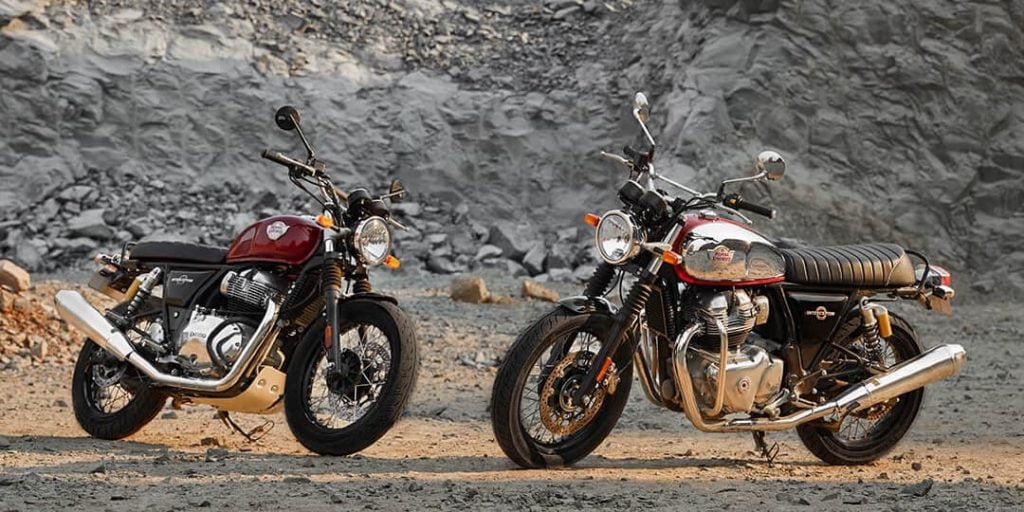
This site has links for things like oil and spark plugs from which we earn a commission (which unfortunately nobody can save, not even us). If you appreciate this work, then please use those links. Thanks!
Royal Enfield Interceptor 650 Service Intervals
The Royal Enfield INT 650 has 3,000 mile / 5,000 km or 6-monthly service intervals at which Royal Enfield recommends you do a host of checks of the motorcycle.
However, the Interceptor 650 only has 6,000 mile / 10,000 km or annual service intervals at which they recommend you change the oil and filter. You should also do the valve service at these points — Royal Enfield explicitly mentions you should do it annually, even if the distance is not covered.

While the manual specifies explicitly that it should also be annual, too, this is not conventional wisdom — manuals for most motorcycles give a distance (or operating time) interval only.
The valve clearance check is not difficult on the 650 twins, but it’s still an annoyance to do so often — for many riders this will come up at least once a year.
Change the spark plugs every 12000 miles / 20000 km.
Other than that, service the chain regularly, and keep the fluids fresh.
For more detail, see the service schedule below.
What you need to service the Royal Enfield Interceptor 650
Servicing your own Interceptor 650 is easy — it’s easy to get to everything and parts are readily available.
| Part | Royal Enfield Interceptor Spec |
|---|---|
| Engine oil | Oil changes every 10K km. Manual calls for SAE 10W-50 API SL (or higher) or JASO MA2-rated fully synthetic oil, e.g. Castrol Power 1 10W-50. |
| Oil filter | Royal Enfield wants you to order the filter from their website, but you can use a Mobil 1 M1-104A. |
| Spark plug | Bosch UR5CC (0.7-0.8mm) per the manual. This is equivalent to the NGK CR8E. |
| Air filter | You need to clean the air filter periodically but replace it when you change the oil — or more often if you ride it in the dirt. Use DNA air filter R-RE65N18-01. |
| Brake fluid | The manual calls for DOT 4 brake fluid, e.g. Castrol DOT 4. |
| Fork oil | The manual specs 2W 25 HPCL fork oil. |
| Head lamp | The front headlamp is a H4 60/55W bulb |
| Brake lamp | The rear brake lamp is a P21/5W Halogen. |
| Chain | Use a chain lubricant like Motul chain paste periodically to keep the chain fresh. |
| Grease | Use lithium soap-based grease for general greasing (bearings, swing-arm, kickstand etc.) |
Maintenance schedule for the Royal Enfield Interceptor 650
Below is the maintenance schedule for the Royal Enfield Interceptor 650, taken from the manual and reformatted slightly.
There are two separate parts:
- Regular service every 600 miles / 1000 km (or every major ride), and
- The longer-term maintenance schedule
Regular service
Do the following checks on your Royal Enfield Interceptor 650 every 600 mi / 1000 km.
| Component | Regular service |
|---|---|
| Engine oil | Check oil level and top up if necessary (Castrol Power 1 10W-50) |
| Clutch cable | Check cable free play. Adjust if necessary |
| Hand levers | Check hand levers pivot point for smoothness. Lubricate if necessary |
| Drive chain | Clean, lubricate, and adjust chain Target chain tension — 20-30mm |
Maintenance schedule
The recommended schedule for the Interceptor 650 is based on ordinary riding conditions. The manual takes pains to state that if you ride it more severely (e.g. in a dusty environment) you’ll have to service your Interceptor 650 more often.
For maintenance after the end of the schedule below, continue with the same frequency as observed in the schedule (adjusting for how intensely you use your bike).
Noteworthy items in the maintenance schedule are
- You have to check / adjust the valve clearance every 6,000 miles / 10,000 km
- There’s no coolant to change — this baby’s air-cooled
Legend and notes on the maintenance schedule:
- I : Inspect (Clean, Adjust, Lubricate or Replace if necessary)
- A : Adjust
- L : Lubricate
- R : Replace
- C : Clean
The below maintenance schedule is abridged at 12,000 miles / 20,000 km for ease of legibility. Repeat every item every 1, 2, 3, or 4 intervals.
| Kms x 1000 | 0.5 | 5 | 10 | 15 | 20 | |
|---|---|---|---|---|---|---|
| Miles x 1000 | 0.3 | 3 | 6 | 9 | 12 | |
| Months | 1.5 | 6 | 12 | 18 | 24 | Notes |
| Inspection checklist (see below) — Perform all items | ✓ | ✓ | ✓ | ✓ | ✓ | Perform every year |
| Engine Oil (#) (Castrol Power 1 10W-50) | R | I | R | I | R | Check level at every 1,000 Kms or earlier as required |
| Engine Oil Filter Element (#) (M1-104A) | R | R | R | |||
| Inlet / Exhaust valve clearances | I&A | I&A | I&A | Service annually even if distance not travelled. | ||
| Spark plug (NGK CR8E) | I | I | I | I | R | Replace every 12,000 mi / 20,000 km |
| Fuel filter (External) | R | |||||
| Air filter element | C | C | R | C | R | More frequently if motorcycle often used in dusty conditions |
| Vent pipe under air filter box | I | I | I | I | I | |
| Hose – Secondary Air Injection | I | I | I | I | I | US models only |
| Disc brake fluid, front and rear — Replace | R | Replace every 2 years | ||||
| Front fork oil leak | I | I | I | I | I | Replace fork oil at every 60,000 kms or when any work carried out — whichever earlier |
| Rear wheel cush rubbers | I | |||||
| Earth wire eyelet tightness | I | I |
Inspection checklist
Go through the following checklist at every service per the schedule above.
| Royal Enfield Interceptor 650 — Inspection Checklist |
|---|
| HT leads — Inspect for cracks |
| Rubber Hose, air filter to throttle body — Inspect |
| Rubber hose, inlet manifold / adaptor — Inspect |
| Evaporative emission equipment rubber hoses — Inspect |
| Accelerator and throttle pulley cables free play — Adjust |
| Brake Pads – Front & Rear — Inspect wear |
| Disc brake fluid level – front and rear — Inspect level |
| Rear brake pedal and gear change pedal pivot — Lubricate |
| Brake hose and banjo bolt – front and rear — Inspect condition / tightness |
| Steering tapper roller bearing play — Inspect, lubricate/tighten/replace as necessary |
| Spoke tightness/ wheel rim run out front and rear — Inspect / Adjust |
| Battery terminals — Apply petroleum jelly |
| Battery electrolyte levels — Check Not applicable for sealed batteries |
| Tyre wear pattern front and rear — Inspect |
| Side stand, centre stand pivots — Lubricate |
| Rider and pillion foot rest pivot — Lubricate |
| All mounting fasteners in vehicle for tightness — Inspect |
Chain Maintenance on the Interceptor 650
Royal Enfield recommends regularly checking and adjusting chain maintenance. This is important on all chain-driven motorcycles, but it’s especially important on an everyday bike whose chain might get wet and dirty.
Keep the chain well-lubricated and clean, using a well-recommended and affordable chain lube like Motul Chain Paste. You should check the chain condition before every major ride.
Every service, you should also check the chain tension, and adjust it if necessary. Here’s how.
- Put the motorcycle on a flat surface, on its side stand, with the gear in neutral
- Measure the chain free play at the loosest part of the bottom section of the chain. Free play is the total deflection of the chain when pushing it up and down.
Target free play for the Interceptor 650: 20-30 mm (0.8-1.2 in)
You need to measure free play at a few points of the chain, to make sure you capture the loosest one.
If the chain is too loose, or too tight, you need to adjust it.
- Loosen the axle nut of the rear wheel axle. You may need a breaker bar.
- Loosen the lock nuts on the adjusters on both sides of the swing arm with a 12 mm wrench.
- Use a second 12 mm C-spanner to adjust the chain adjusters on the left and right.
- Make sure you adjust them evenly on the left and right, to keep the chain aligned.
- When the free play is between 20-30 mm, tighten the axle nut and the lock nuts again. (Tighten to 100 Nm / 74 lb-ft).
Tyres and tyre pressures for the Interceptor 650
The Interceptor 650 ships with tubeless tyres but fitted with inner tubes (that’s what it says in the manual, I swear). Below are the tire size specs and the recommended pressures.
| Wheel | Tyre size | Pressure (without-with pillion) |
|---|---|---|
| Front | 100/90-18 M/C 56H | 2.2 Bar Bar (32 psi) |
| Rear | 130/70-18 M/C 63H | 2.5-2.75 Bar (36-29 psi) (depending on riding alone or with a pillion) |
The brand of tyre the INT650 ships with is Pirelli Phantom Sports Comp tyres. But you can fit any other class of street tyres on there.
About the Royal Enfield Interceptor 650
The Royal Enfield Interceptor 650 was a huge departure for Royal Enfield from what it used to do historically. Known for its shaky singles, Royal Enfield was suddenly producing a twin. And what a looker of a twin!
As soon as you see it you think “Ah, this looks familiar”. The Interceptor 650 looks a lot like a classic vintage British motorcycle like something from Triumph or Norton (or Kawasaki, who also have a lot of British history).
The Royal Enfield Interceptor 650 ticks a lot of boxes for what people wanted to come out of Royal Enfield. Royal Enfield was an emerging cool brand before the 650 twins, known for having a retro/classic vibe (and reality… their bikes are pretty old tech), and some really nice looking bikes.
But the 650 twins delivered a lot of new stuff that people wanted. These included
- A bigger, more torquey/powerful engine. Still not huge, but now at least it can keep up.
- ABS brakes (new riders like having it)
- Fuel injection
- Even better looks!
- More cylinders! And even better, it’s a parallel twin in 270-degree configuration.
Royal Enfield did all this with the INT 650 and still kept the entry price of it very low. It’s definitely one of the best-looking bikes for the money you can buy. But you feel the savings in the suspension, which are a quick upgrade for anyone thinking of riding it as a performance machine.
One compelling part of the Interceptor 650 is the engine, which has so much room for modification. Stock it runs a 9.5:1 compression ratio — very low, and suitable for all kinds of bad gas.
The camshaft timing in the INT650 is also quite gentle. So you can liven up the engine quite a bit with a camshaft upgrade (which is cheap, as it’s SOHC), a simple exhaust upgrade, and a dyno tune. So around $1000 of work makes the bike a lot livelier.
People concerned about power output in everyday riding needn’t be. The bike peaks in torque just as it’s reaching 75 mph (or 130 km/h), and it still has pull up to around 90 mph (150 km/h). Beyond that, it doesn’t feel too comfortable.
But most people wouldn’t buy a bike like the Interceptor 650 to sustain high freeway speeds. Yes, some freeway droning almost requires it in Europe and the US, but if you do that often, you might be looking at the wrong bike.
Another impressive thing about the Royal Enfield INT 650 is the handling. Again, it isn’t just “good for the price” — it’s good. The bike isn’t heavy (202 kg wet — a Triumph Bonneville 865 is 225 kg wet) and so the stock suspension and brakes are easily up to the task. It doesn’t feel out of shape at high speeds (high for this bike) or on windy roads.
The Royal Enfield Interceptor 650 isn’t just a good bike for the price — it’s a good bike.
The only fly in its ointment are the 5000 km valve inspection intervals. But luckily, service guides are widely available. Get your wrenches out.
Royal Enfield also released a cruiser for the same platform, the Super Meteor 650.
Reference — Manual for the Royal Enfield Interceptor 650
The maintenance schedule above was from the manual for the Interceptor INT 650 model. You can get the manual from here.
We also compared it to the US manuals (there’s an air injection system added for emissions reasons, but that’s it.)
See the screenshot below as evidence of the information above.
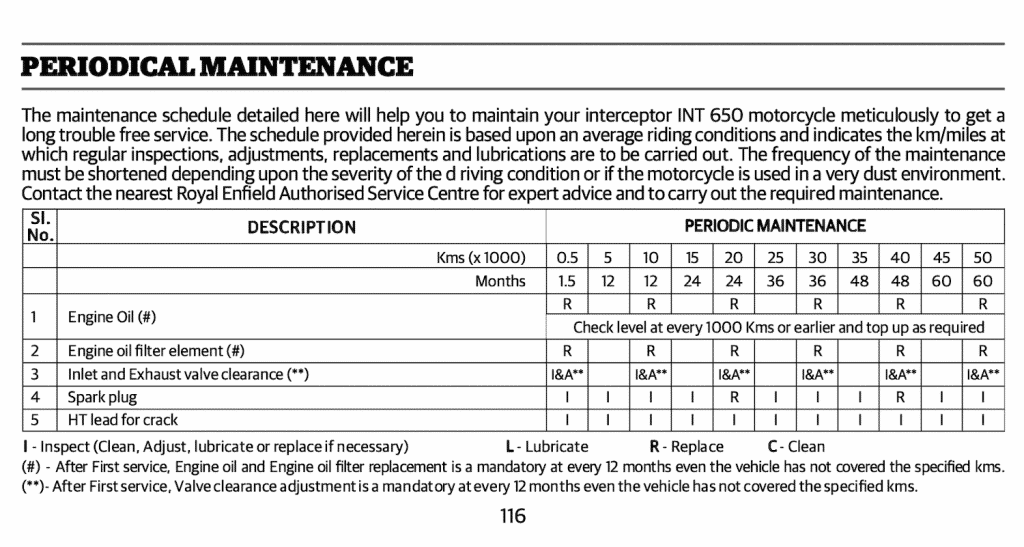
Royal Enfield updated the manual slightly in recent years, requiring less frequent service of some items.
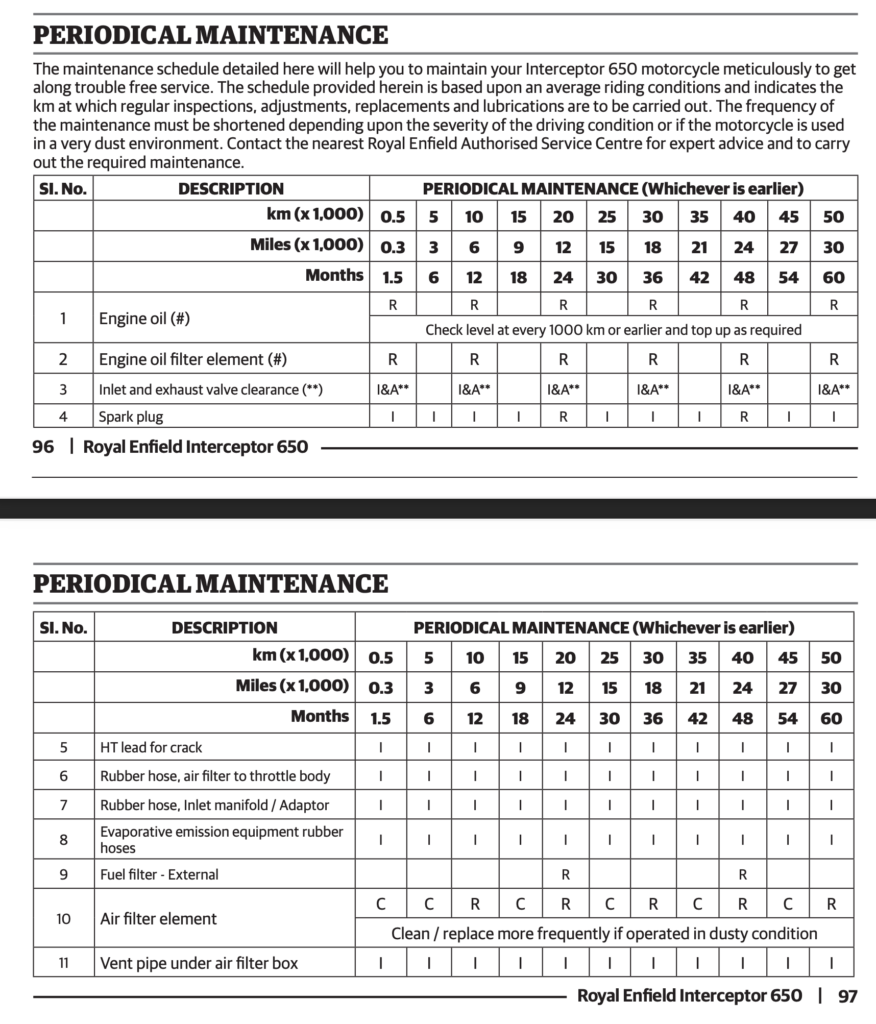
One of my favourite things about Royal Enfield is that they love it when people do their own maintenance, and their owners’ manuals are on their way to being service manuals. You can find guides to doing the valve service online in many places.
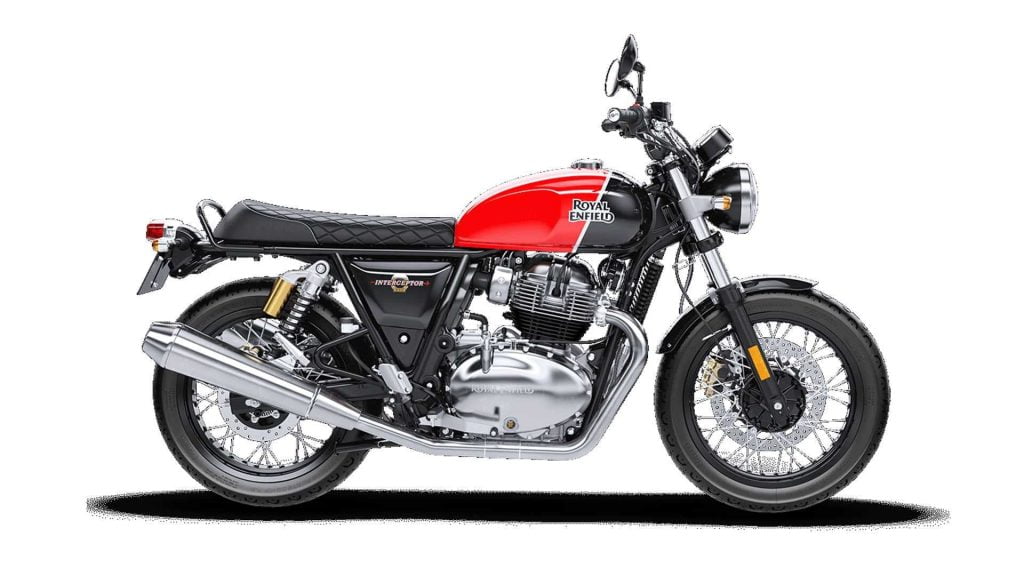
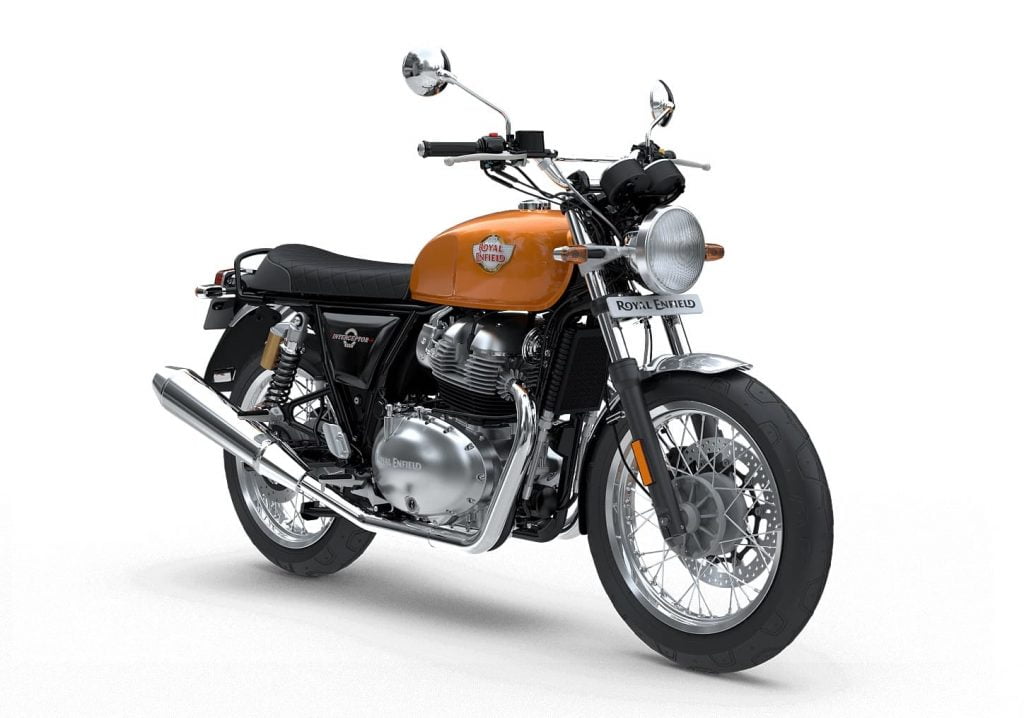

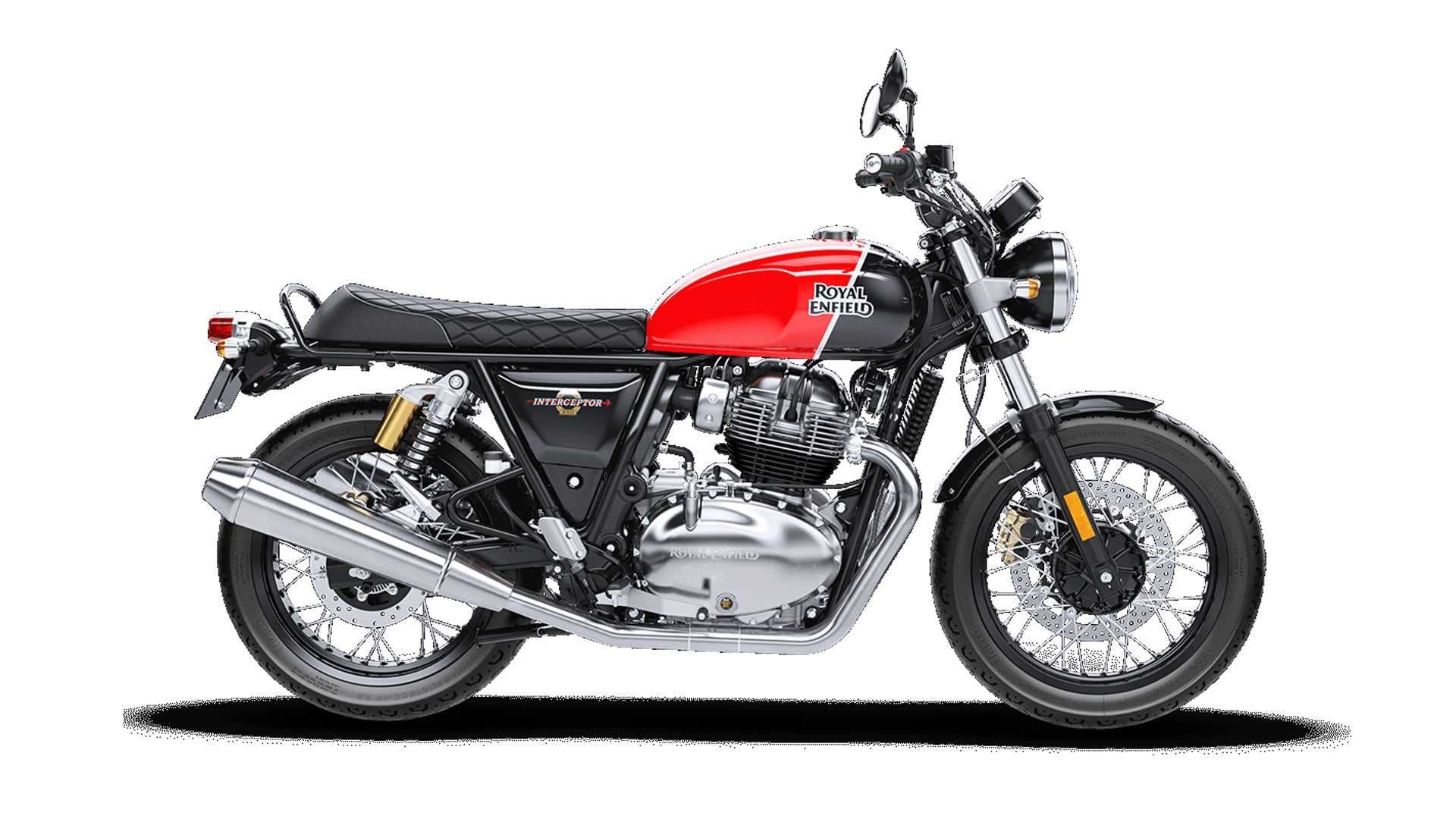
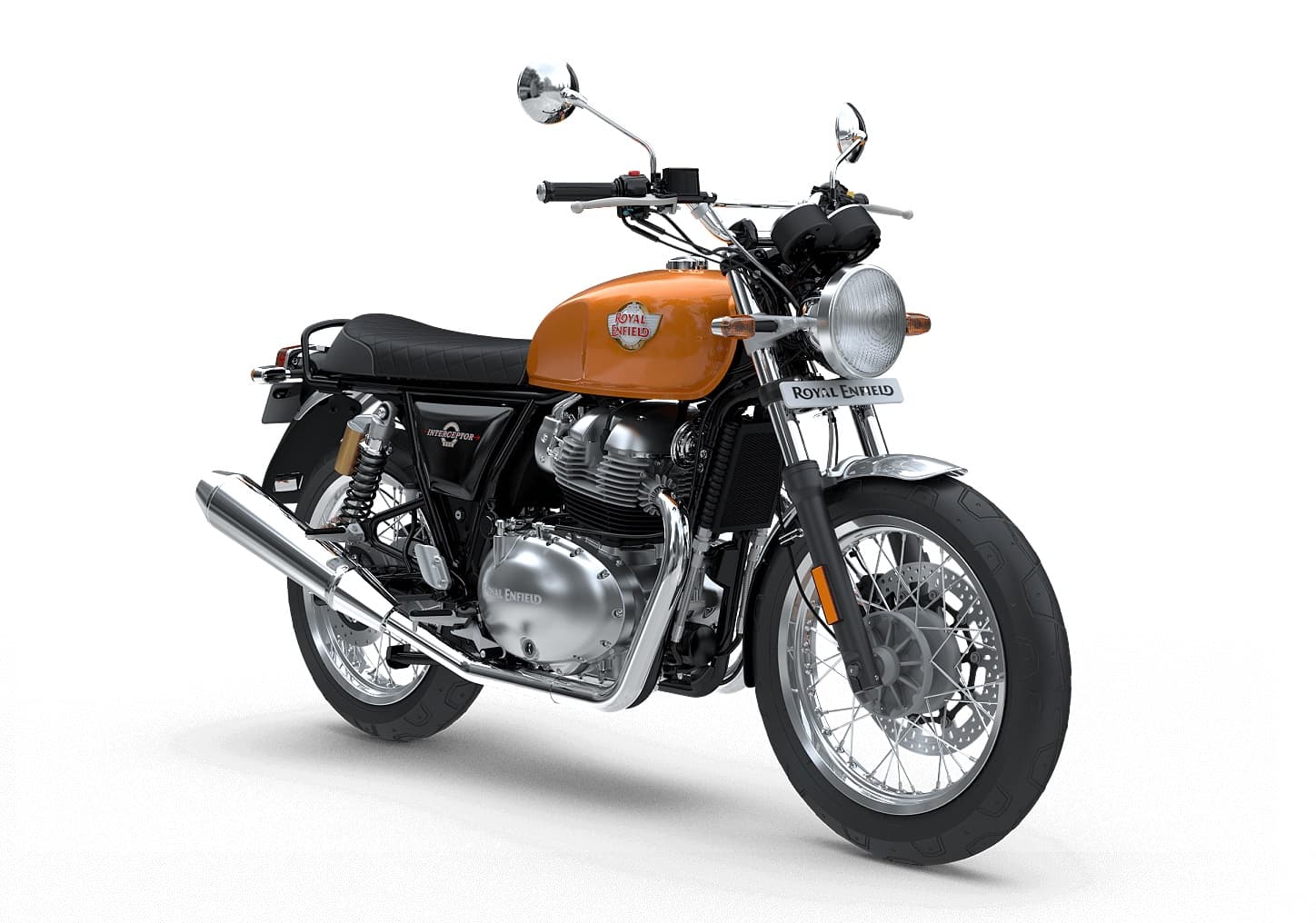
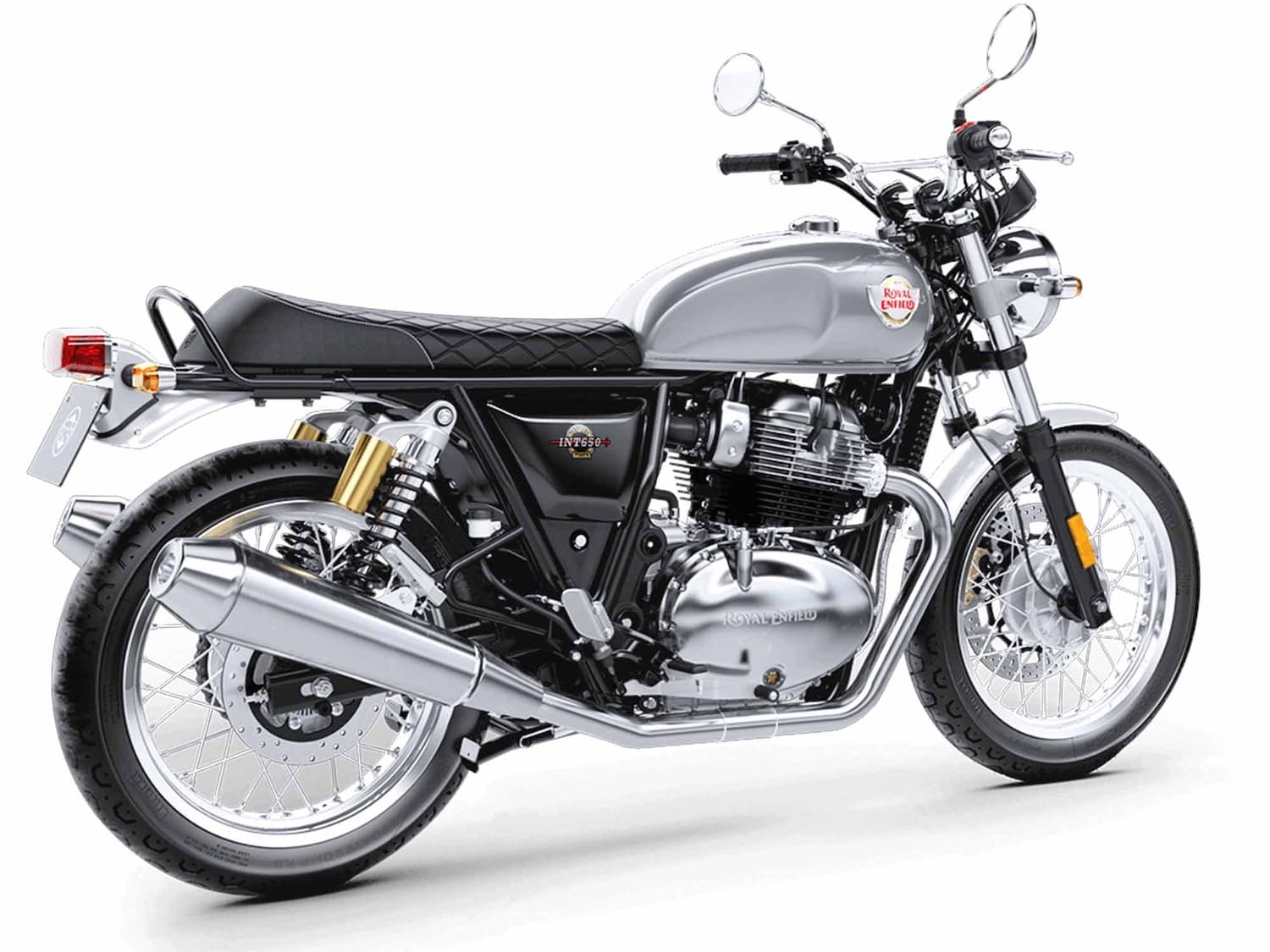
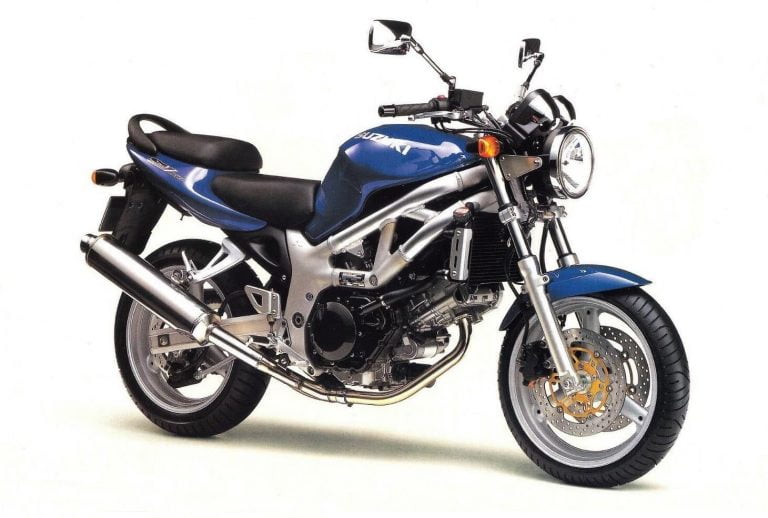
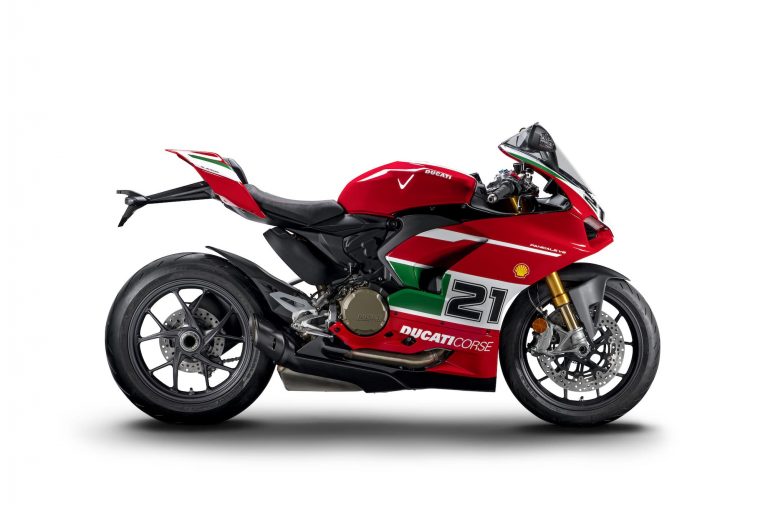
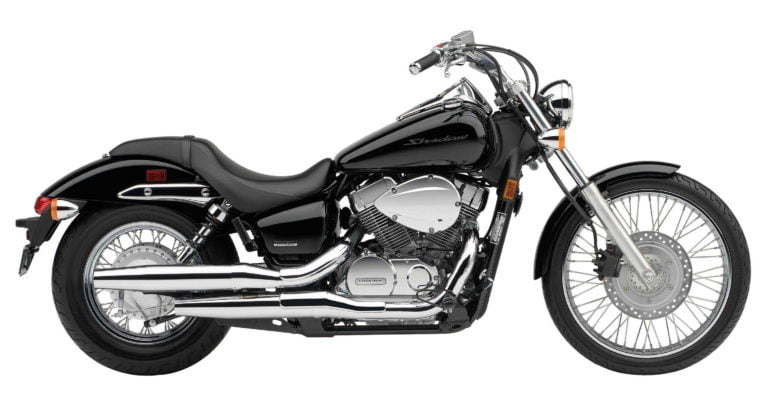
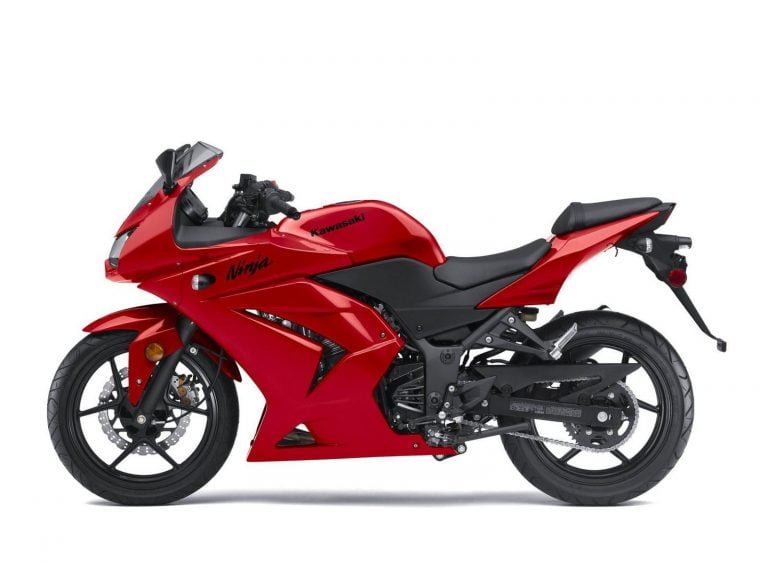
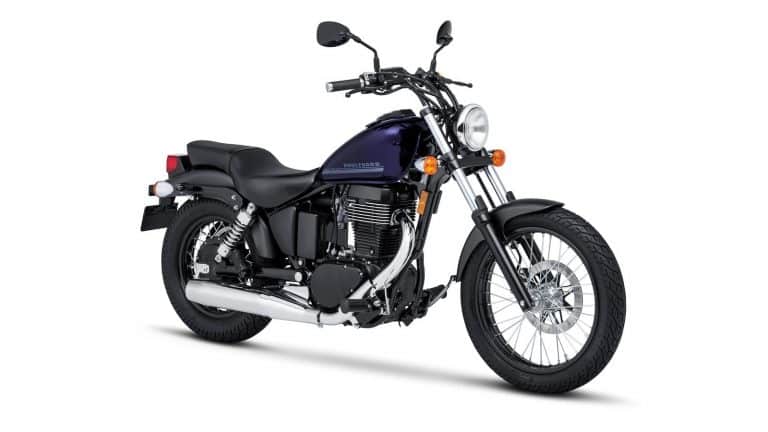
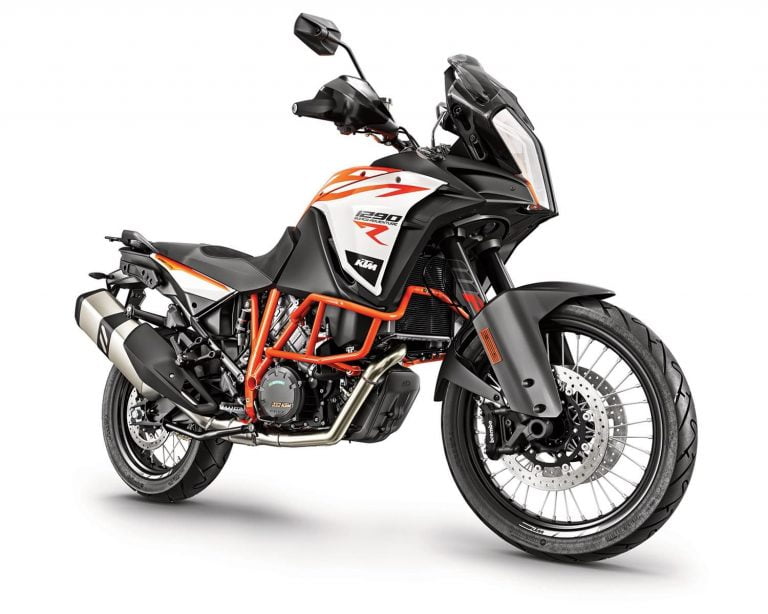
Dana,
Your work across so many makes and models of motorcycles is a brilliant resource – congratulations, and thank-you.
Just a note with the inspection and adjustment of valve clearances on the Royal Enfield 650 Twins; my take on reading the maintenance schedule in the manual is that it needs to be done every 12mths/10000kms, not every 6mths/5000kms as you have mentioned.
Otherwise keep your articles coming, they’re great mate!
Huh maybe it changed! I’ll go look at the latest manuals and update as necessary. Sometimes it’s regional too.
Update — I had misread the initial schedule but have fixed it. Also, the schedule did change slightly (for the fuel filter) so I have updated it anyway.